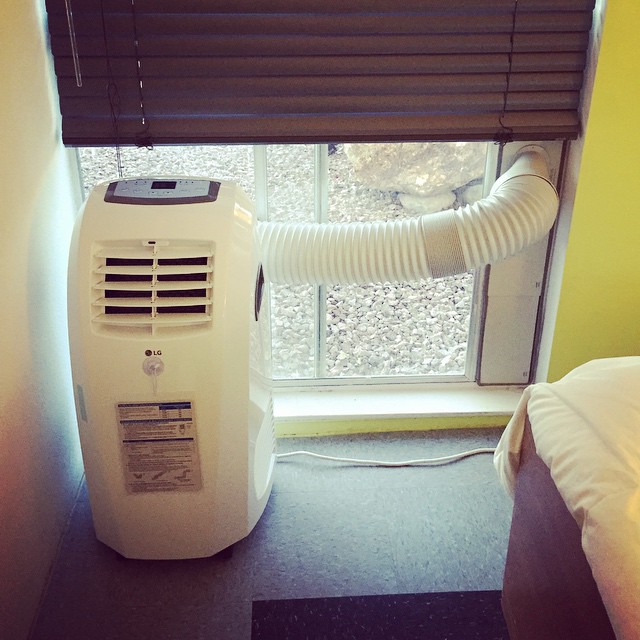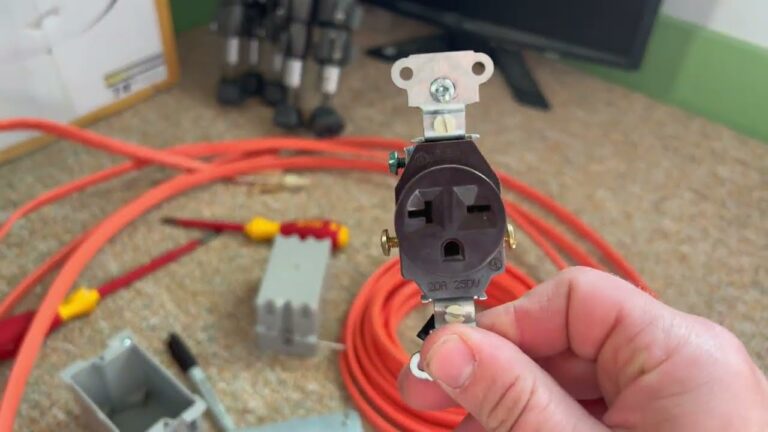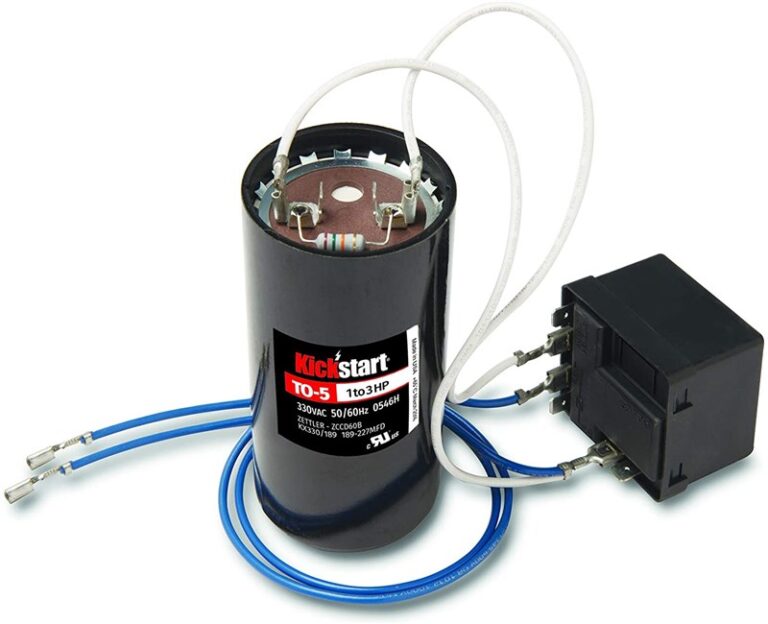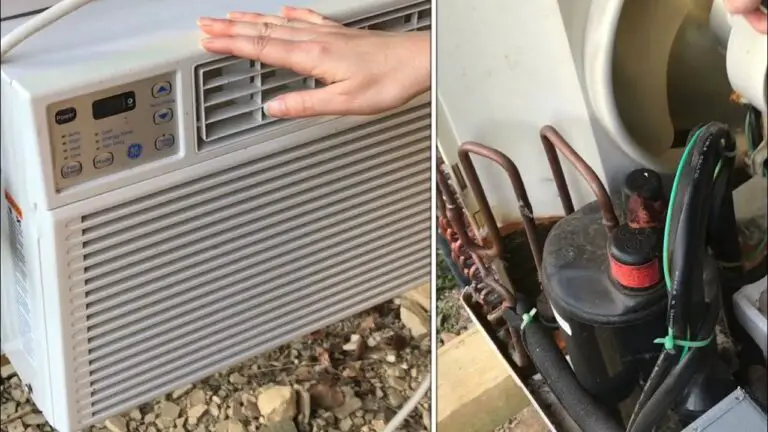Can You Use A Window Air Conditioner Without A Window? Discover How
No, you cannot use a window air conditioner without a window. It needs proper venting to function effectively.
Window air conditioners are designed to expel hot air outside while cooling the indoor space. Without a window or a proper ventilation system, the hot air remains trapped inside, making the unit ineffective and potentially damaging. Using a window air conditioner without a window can also lead to safety hazards.
Consider alternative cooling options, like portable air conditioners, which come with flexible venting solutions. Ensure any cooling device you choose fits your space requirements and maintains proper ventilation. Proper setup is essential for efficient and safe operation, providing you with the comfort you need during hot weather.
Introduction To Window Air Conditioners
Window air conditioners are popular for cooling small spaces. These units are easy to install and use. They provide relief from the summer heat.
What They Are
Window air conditioners fit into a window frame. These units have a compact design. They cool rooms by expelling hot air outside.
Most window air conditioners have a simple control panel. Users can adjust temperature and fan settings. Many models also include a remote control.
Common Uses
Window air conditioners are common in apartments and small homes. They are ideal for bedrooms, living rooms, and offices. These units are great for cooling one room at a time.
| Room Type | Recommended BTU |
|---|---|
| Bedroom | 5,000 – 6,000 BTU |
| Living Room | 8,000 – 12,000 BTU |
| Office | 6,000 – 8,000 BTU |
Window air conditioners are also used in small commercial spaces. They provide efficient cooling without high energy costs. Some models even have energy-saving modes.
- Easy to install
- Affordable
- Energy-efficient
- Portable
- Measure your window
- Choose the right BTU
- Install the unit
- Enjoy cool air
Challenges Without A Window
Using a window air conditioner without a window can be tricky. This setup often faces unique challenges. Below, we’ll explore the main issues you might encounter.
Ventilation Issues
A window air conditioner needs proper ventilation to work well. Without a window, air circulation becomes a problem. The unit expels hot air that needs an exit point. Without a window, this hot air stays in the room.
This can make the room hotter rather than cooler. Proper ventilation is vital for the air conditioner to function. You might need to create a vent hole in the wall. This can be complicated and costly.
Placement Problems
Finding the right spot for your air conditioner is essential. Without a window, placement options are limited. The unit needs to be near a power source. It also needs space for air to flow freely.
Placing it on the floor can block the airflow. This reduces the unit’s efficiency. You may need a special stand or shelf. This can add to the overall cost and complexity.
Below is a table summarizing the key challenges:
| Challenge | Description | Possible Solution |
|---|---|---|
| Ventilation | No exit for hot air | Create a vent hole |
| Placement | Limited spots | Use a stand or shelf |
Alternative Ventilation Solutions
Wondering how to use a window air conditioner without a window? There are alternative ventilation solutions you can explore. These methods ensure your air conditioner works efficiently. Let’s dive into some practical solutions.
Using A Sliding Door
If you have a sliding door, you can use it for ventilation. Here’s how:
- Place the air conditioner near the sliding door.
- Buy a sliding door vent kit. These kits are easy to find online.
- Install the vent kit. This kit will help seal the gap around the air conditioner.
- Ensure there is a tight seal to prevent air leaks.
This method works well for patio or balcony doors. It keeps your room cool without needing a window.
Creating A Vent Hole
Another solution is to create a vent hole. This might sound complex, but it can be done with the right tools.
- Choose a suitable spot on your wall. Preferably near where you want the air conditioner.
- Use a drill to create a hole. The hole should match the size of the air conditioner’s vent hose.
- Insert the vent hose through the hole.
- Seal the edges around the hose. Use caulk or a similar sealant to prevent air leaks.
This method requires some DIY skills but provides a permanent solution. It ensures your air conditioner operates efficiently.
Both these methods offer practical ways to ventilate your air conditioner without a window. Choose the one that suits your space and skills best.
Portable Air Conditioner Options
Are you wondering if you can use a window air conditioner without a window? The answer is yes, and one of the most effective alternatives is a portable air conditioner. These units offer flexibility, ease of installation, and they do not require a window to function. Let’s dive into the portable air conditioner options available for you.
How They Work
Portable air conditioners are designed to cool a room effectively. They come with a hose that expels hot air outside. You can place the hose through a sliding door, wall, or even a ceiling vent. These units have built-in wheels, making them easy to move around. They use a refrigeration cycle to cool the air, similar to traditional window units.
Benefits Over Window Units
Portable air conditioners offer several benefits over traditional window units:
- Flexibility: You can move them from room to room.
- Easy Installation: No need for heavy lifting or tools.
- No Window Required: Perfect for rooms without windows.
- Multiple Sizes: Suitable for different room sizes.
Here’s a quick comparison between portable air conditioners and window units:
| Feature | Portable Air Conditioner | Window Unit |
|---|---|---|
| Flexibility | High | Low |
| Installation | Easy | Moderate |
| Window Requirement | No | Yes |
| Portability | Yes | No |
Portable air conditioners can be a great solution for cooling specific areas. They are versatile, easy to install, and do not require a window. If you need a cooling solution that offers mobility and ease of use, a portable air conditioner is a solid choice.
Diy Ventilation Techniques
Using a window air conditioner without a window can seem challenging. But with some DIY ventilation techniques, you can make it work efficiently. This section will guide you through two popular methods: Building a Vent Box and Using Exhaust Hoses. Both methods help direct hot air outside, ensuring your space stays cool.
Building A Vent Box
Building a vent box is a simple and effective solution. You will need some basic materials:
- A wooden or plastic box
- An exhaust fan
- Duct tape
- Tools for cutting and assembling
Follow these steps to create your vent box:
- Measure the size of your air conditioner’s exhaust vent.
- Cut a hole in the box to match the vent size.
- Fix the exhaust fan inside the box.
- Seal any gaps with duct tape.
- Place the box near an opening, like a door or another window.
The vent box will help push the hot air outside, keeping your room cool.
Using Exhaust Hoses
Exhaust hoses are another practical method. This method requires:
- Flexible exhaust hoses
- Hose clamps
- Adapters or connectors
Here’s a step-by-step guide:
- Attach one end of the hose to your air conditioner.
- Secure it with a hose clamp.
- Use an adapter to connect the other end to an opening.
- Ensure the connection is tight to avoid leaks.
Exhaust hoses can be extended to reach further openings. They are flexible and easy to install. They ensure hot air is expelled outside, maintaining a cool indoor environment.
Both methods are effective for using a window air conditioner without a window. They are simple DIY projects that anyone can do.

Credit: americanhomewater.com
Safety Considerations
Using a window air conditioner without a window can be risky. Understanding safety considerations is crucial. This section will discuss key points to keep you safe.
Avoiding Overheating
Overheating is a significant concern with window air conditioners. These units need proper ventilation. Without a window, the hot air has nowhere to escape. This can cause the unit to overheat.
To prevent overheating, use ventilation hoses. These hoses can redirect the hot air outside. Always ensure the hoses are securely attached. Regularly check for blockages in the hoses.
Ensuring Proper Airflow
Proper airflow is essential for air conditioners. Without it, the unit will not cool effectively. It can also lead to mechanical failure.
Place the unit in an open space. Ensure there are no obstructions around it. You can use a fan to improve airflow. Direct the fan to blow air away from the unit.
Here is a table for quick reference:
| Safety Measure | Action |
|---|---|
| Avoid Overheating | Use ventilation hoses |
| Check Hoses | Ensure no blockages |
| Ensure Proper Airflow | Place in open space |
| Use a Fan | Improve airflow |
Follow these tips to use your air conditioner safely. Safety is always the top priority.
Energy Efficiency Tips
Using a window air conditioner without a window might seem tricky. But with the right tips, you can make it work efficiently. Here, we’ll share some energy efficiency tips to help you save energy and stay cool.
Sealing Gaps
Sealing gaps is essential for maintaining a cool room. Check for gaps around doors and windows. Use weatherstripping to seal these gaps. This keeps the cool air inside. Ensure your AC unit fits tightly in its space.
Use foam or caulk to fill any remaining gaps. This will prevent hot air from entering. A well-sealed room helps the AC work less. This saves energy and money.
Insulating The Room
Insulating the room enhances energy efficiency. Use thick curtains or blinds to block sunlight. Sunlight can heat up the room quickly.
Consider using reflective window film. This film can reduce heat gain from sunlight. Install insulation on walls and ceilings if possible. Insulation keeps the room temperature stable.
Here are some insulation materials you can use:
- Foam boards
- Spray foam
- Fiberglass batts
Close doors to unused rooms. This keeps the cool air where you need it. An insulated room makes your AC more efficient.

Credit: www.youtube.com
Conclusion And Final Thoughts
In this section, let’s wrap up the topic of using a window air conditioner without a window. We’ll cover the summary of options and best practices to ensure you make the best choice.
Summary Of Options
There are several ways to use a window air conditioner without a window. Here’s a quick summary:
- Portable Air Conditioners: These do not need a window. They can be moved around easily.
- Through-the-Wall Units: These can be installed in a wall. They need a hole in the wall.
- Sliding Door Vent Kits: These let you vent an air conditioner through a sliding door.
- Custom Venting Solutions: These involve creating a custom venting setup. It might need professional help.
Best Practices
Follow these best practices to ensure optimal performance and safety:
- Proper Ventilation: Ensure there is proper ventilation. This prevents overheating.
- Regular Maintenance: Clean filters regularly. This ensures efficient cooling.
- Secure Installation: Make sure the unit is securely installed. This avoids accidents.
- Electrical Safety: Use a dedicated power outlet. This prevents electrical overload.
- Monitor Energy Use: Keep an eye on energy consumption. This helps save on electricity bills.
By following these tips, you can use your window air conditioner without a window effectively. Ensure the space remains cool and comfortable.
| Option | Pros | Cons |
|---|---|---|
| Portable Air Conditioners | Easy to move, no window needed | May need a venting kit |
| Through-the-Wall Units | Permanent solution, high cooling efficiency | Requires wall modifications |
| Sliding Door Vent Kits | Allows use of existing doors | May reduce door functionality |
| Custom Venting Solutions | Tailored to specific needs | Can be costly and complex |
Frequently Asked Questions
What Happens If You Use A Window Air Conditioner Without A Window?
Using a window air conditioner without a window can lead to poor ventilation, overheating, and inefficient cooling. The unit needs proper exhaust to function effectively.
Can I Put An Air Conditioner In A Room With No Windows?
Yes, you can. Use a portable air conditioner with a venting kit. Another option is a split air conditioner.
Does A Window Ac Have To Be In The Window?
No, a window AC does not have to be in the window. It can be installed in a wall instead.
Conclusion
Using a window air conditioner without a window is possible with some adjustments. Consider venting through a wall, ceiling, or sliding door. Proper installation ensures efficiency and comfort. Always follow manufacturer guidelines for best results. Explore all options to keep your space cool and comfortable.







